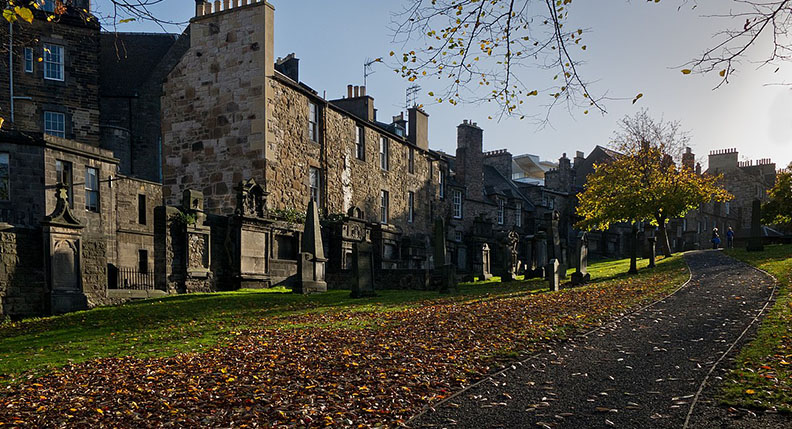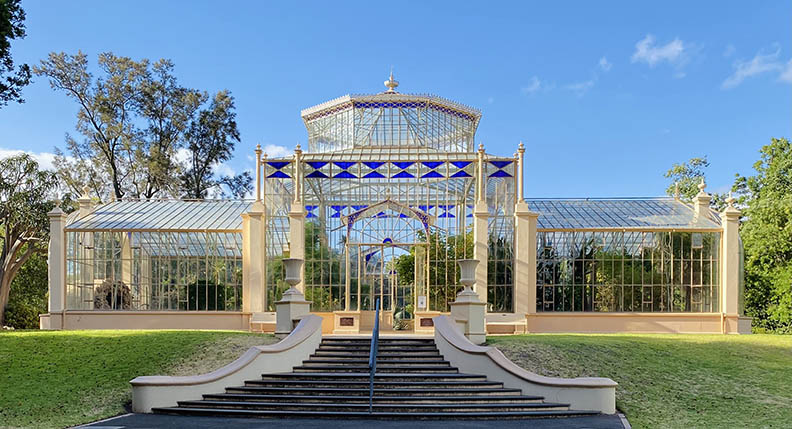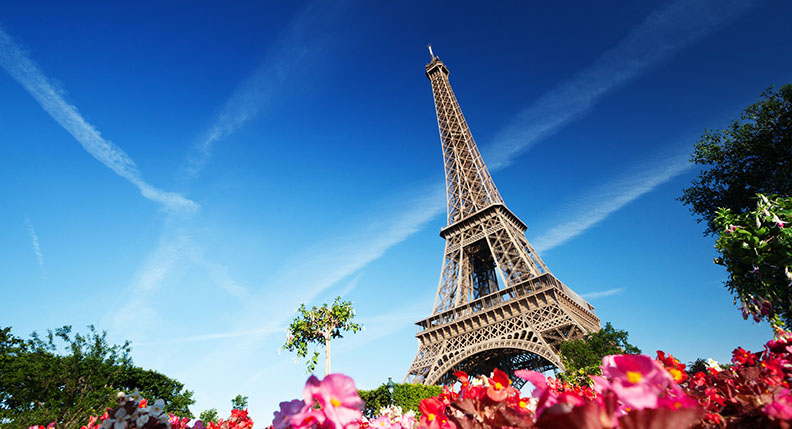Edinburgh, the capital with two faces
Edinburgh is a dual city, changing like the weather that constantly shifts from rain to sunny spells due to the relentless wind blowing from all directions, testing the nerves of anyone (myself included) who prefers to bask in the sun’s caresses.
Medieval Edinburgh: ‘Old Town’
On one side, there’s Old Town. The medieval heart of Edinburgh sprawls across a hill, or rather a remarkably exposed ridge… to the whims of unpredictable weather.
Rain and grayness add to the dramatic atmosphere of this area, crisscrossed with narrow alleys, secret passages, staircases, and small squares that often open onto the fantastic Edinburgh Castle, straight out of a Stevenson novel.
Greyfriars Cemetery
Take, for example, Greyfriars Cemetery. This garden cemetery in the heart of the old town offers lovely views of the castle and a rather unusual perspective on the neighborhood’s dwellings, which are separated from the dead by only a few meters.
Epitaphs, mausoleums, and skulls coexist here with the living world, bathing the place in a romantic and highly photogenic ambiance!
Princes Street Park
Another exceptional viewpoint is Princes Street Park, from which the castle imposes its grandiose mass and defensive gaze.
Further along, towards North Bridge, the walk continues, revealing a magnificent architectural spectacle: Gothic spires, gabled facades, and Greek temples clustered in harmonious disorder.
Georgian Edinburgh: ‘New Town’
On the other side of the major commercial artery that is Princes Street, another world unfolds: New Town, the new city built in the 18th century. Its rigorous grid plan contrasts strikingly with the labyrinthine Old Town.
To be honest, everything sets New Town and Old Town apart: New Town consists of private gardens and bucolic views of nature, while Old Town is nothing but cobblestones and a mineral universe. New Town is affluent, bourgeois; Old Town embodies Edinburgh’s dark side, full of mysteries and fantastical tales. In a word, New Town is classical (or more precisely Georgian), while Old Town is medieval.
Dean Village, Edinburgh’s pastoral version
Dean Village is Edinburgh’s hidden gem, a quaint hamlet that has survived the expansive growth of the modern city. Nestled in a valley, it boasts a river flowing under an elegant bridge, charming gardens, and traditional stone houses. To ease the transition from this countryside oasis to Scotland’s capital, there’s Dean Gardens, a park exuding the scent of woodland and the freshness of the nearby river.
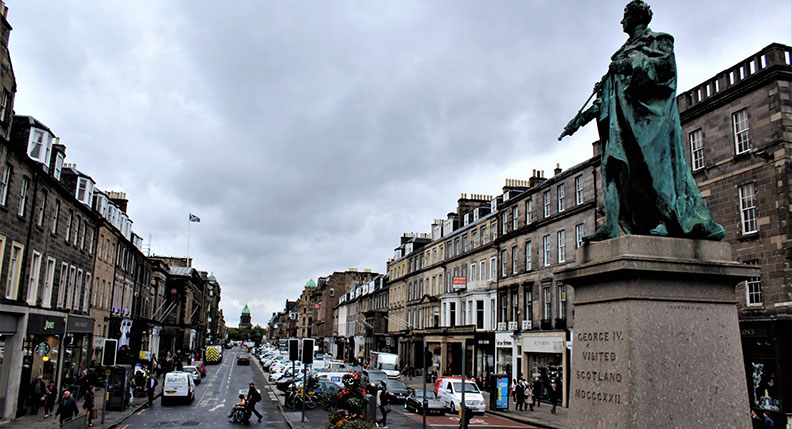
Where to stay in Edinburgh?
For elegance and quintessential Scottish charm, with cozy rooms adorned in beautiful materials, elegant patterns, a touch of classicism, a hint of exoticism, and meticulous design details (including Apple docking stations and Nespresso coffee machines), look no further than the Nira Caledonia hotel. A true haven during your journey through Scotland.
Where to eat in Edinburgh?
For breathtaking views of Edinburgh Castle, choose Tower Restaurant. For delicate dishes and a carefully crafted bistro-style decor, consider Scran & Scallie, owned by two Michelin-starred Scottish chefs. And for a warm atmosphere and prime location, Howies Restaurant on Victoria Street is a preferred option.
Building castles… in Scotland : Glamis Castle
No proper Scottish itinerary is complete without a visit to a castle. Glamis Castle, located about 100 km from Edinburgh, perfectly embodies the mythical and often fantastic image of a Scottish castle:
It’s haunted and steeped in legends that once sent shivers down spines and now evoke smiles. In fact, Glamis Castle proudly bears the title of “Scotland’s most haunted castle” as part of its marketing charm. For the detailed legends, I invite you to read the Wikipedia article.
It has hosted prestigious guests, including the esteemed Queen Mother Elizabeth who grew up here and Princess Margaret who was born here.
Its history is rich and laden with stories, too numerous to delve into here.
When not in ruins, the Scottish castle must adhere to a decorum blending aristocratic and medieval elements in what appears to be a chaotic mix but is actually meticulously maintained and organized. At Glamis, you’ll find a mix of armors, hunting trophies, stuffed animals, coats of arms, four-poster beds, and various valuable furnishings.
Highlands getaway, the sheer power of nature
Now, it’s time to escape to the Highlands, a fascinating region that stirs the soul of the solitary explorer within each of us.
One cannot help but be awestruck by the unfathomable beauty of the Highland landscapes, where the eye gazes over waves of heather and greenery and across vast stretches of bare mountains.
It’s nature on an epic scale, a landscape inhabited by silence, untouched nature that tolerates only the sounds and sights of birds, sheep, and the wind. The only human-made intrusions are a distant castle or a small church and its cemetery, evoking dark fantasies in a romantic mind.
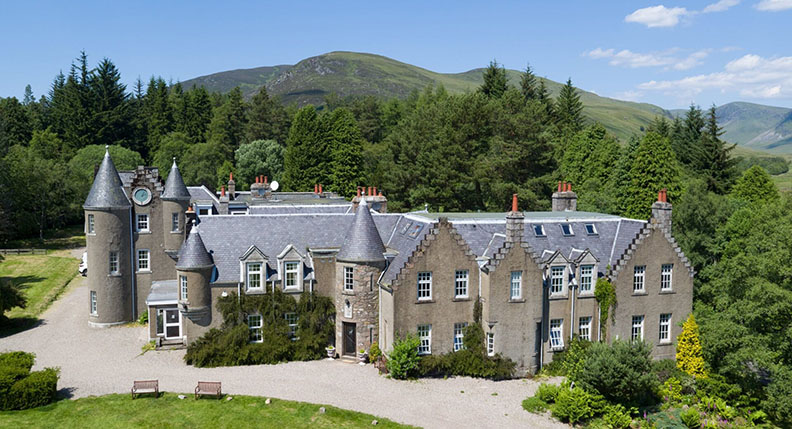
Where to stay in the Highlands?
With creaking floorboards, tartans, Chesterfields, and four-poster beds, Dalmunzie Castle embraces the “gentleman farmer” theme for a cozy and classic ambiance. But the greatest pleasure of this place is drawing back the curtains in your room to reveal views of the mountains and the estate, expansive enough to accommodate a golf course and hundreds (thousands?) of sheep.
Experience the Highlands in all their majestic splendor at Dalmunzie Castle, where history meets luxury amidst breathtaking landscapes. Whether you’re exploring ancient castles, wandering through heather-covered hills, or simply soaking in the tranquility of this rugged terrain, Scotland’s Highlands offer a journey into the heart of nature’s beauty. Unwind, recharge, and let the timeless charm of Dalmunzie Castle be the perfect finale to your Scottish adventure.
